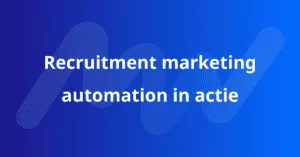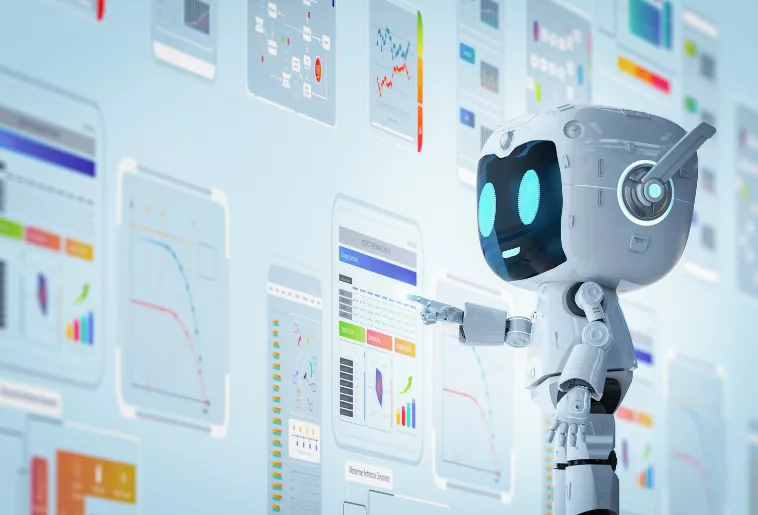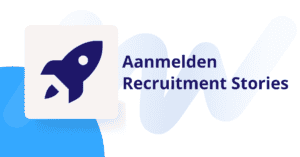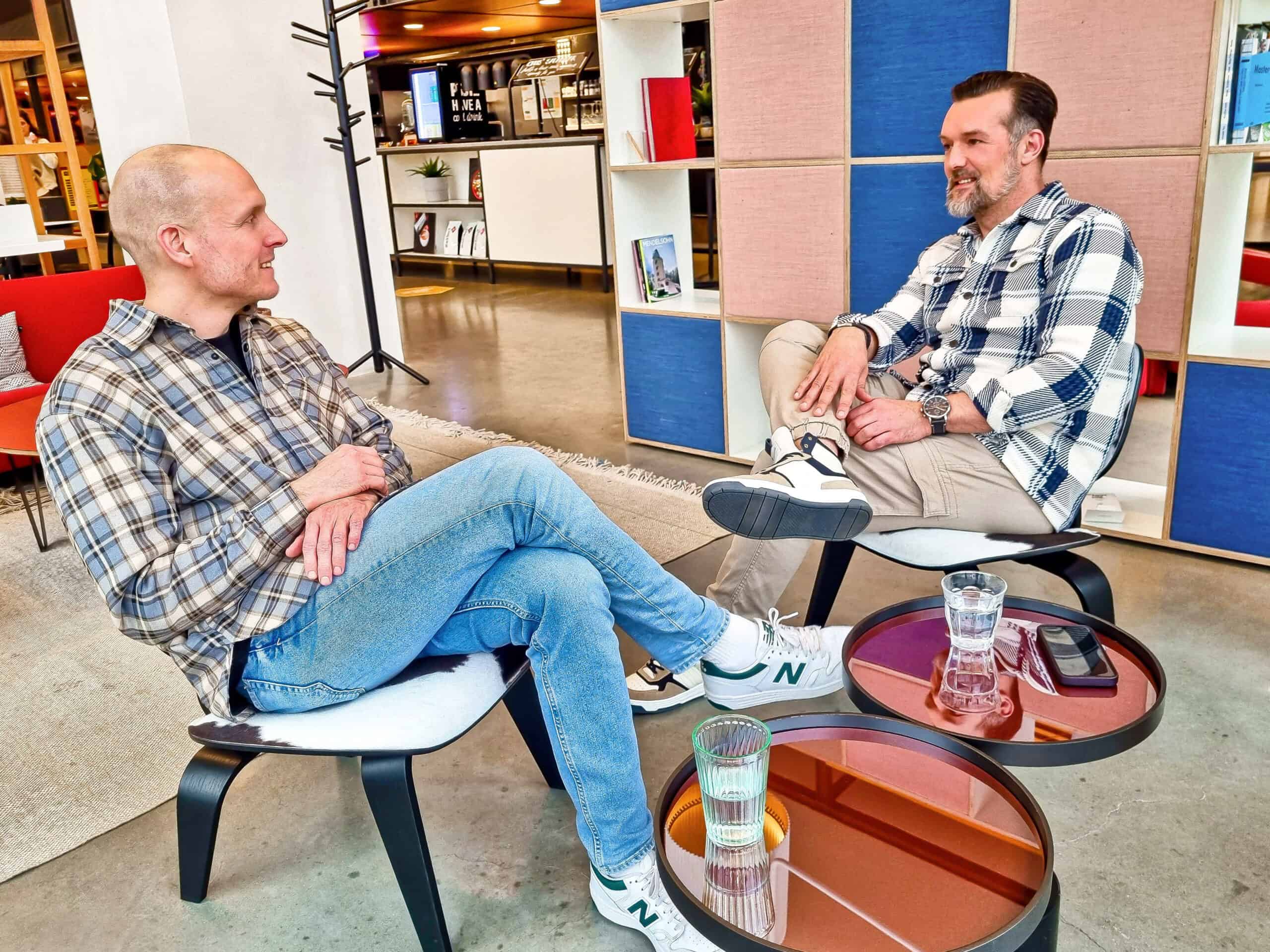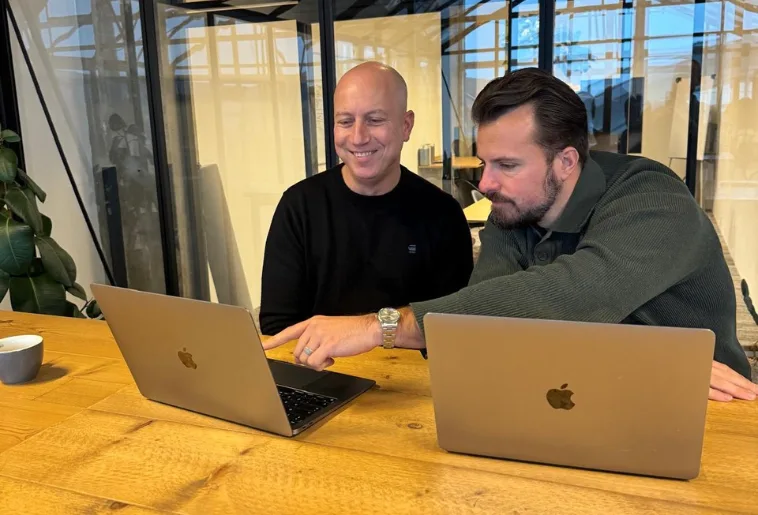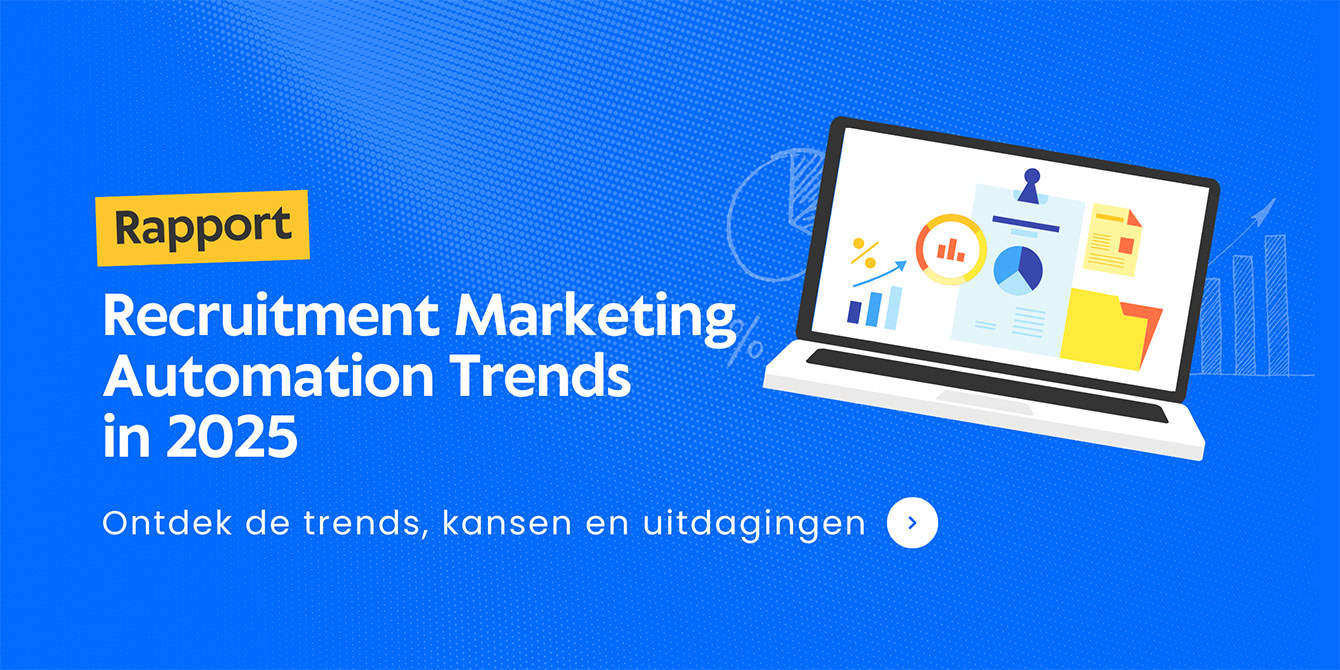Successful employer branding requires two facets. The 'soft side' that revolves around the employer story and associated creative content and the 'hard side' where you use tooling to activate your employer brand and distribute content to your target audience. Two worlds that ideally work together and strengthen each other, but in practice one facet is often underexposed. We sat down with Maarten Reeders, independent employer branding consultant and photographer, and our own Mees van Velzen, the expert on recruitment marketing software, to find out how to bring these two worlds together into one well-oiled employer branding machine.
Authenticity is key
When we ask Maarten and Mees about the success factors of an employer branding strategy, the term authenticity quickly comes up. Maarten explains, "Strong employer branding tells the real story of your organization as an employer. Who are you, what do you do, what drives you? And above all: what do you offer and promise? Candidates want to see the environment where they will be working and get an idea of who their future colleagues are. By painting a sincere picture of your organization, you create a connection to your employer brand."
Mees adds: "We also see this reflected in campaign results. Often a simple video in which a colleague armed with a smartphone asks some questions to team members works better than a slick video in which everything is thought out to perfection."
"This is also why it doesn't work to take a moment in the boardroom or the recruitment team to come up with your employer brand. You should not think about this lightly and instead involve the entire internal organization. Indeed, as a company you have an employer brand from the outset. Because that is everything your employees and the market have long thought of you and how they express themselves about you. However, you can strengthen it and influence it positively by capturing that emotion in your employer branding and sharing your authentic story," Maarten said.
Mees responds, "If what you convey in your employer branding doesn't match reality, candidates almost always notice. They drop out of the application process - causing recruiters to spend a lot of time with candidates who ultimately don't become hires - or are gone again in their probationary period."
The paradox between AI and authenticity
The rapid developments around artificial intelligence are a hot topic in the recruitment world. Among other things, AI offers opportunities to organize content creation faster and easier. After all, you can let AI tools create images and videos and write texts. Mees explains, "The other day in the Recruitment AI Weekly podcast, Friso and I talked about the AI tool Sora. With this you can create videos based on textual input that are indistinguishable from real ones. It remains to be seen how well such a tool can be used now to create a work environment with, for example, workwear with logos, but developments are moving so fast. That moment is very close and so then such a tool can start to take over the 'traditional visual creation' with photography and videography."
Only doesn't that come at the expense of the authenticity of your employer branding statements? Maarten responds: "That is an interesting question. If you make a video with such a tool, for example, the image of the work environment in the video does not match reality. The same goes for the AI-generated people you see in the video. They don't exist in real life. So once a candidate goes for an interview with an employer, the actual image does not match what the candidate has been presented with. In my opinion, this is detrimental to your recruitment success. Don't get me wrong, for certain content it will work. I applaud AI developments and tooling, and it's certainly going to complement and enlighten. But I don't yet see how it could completely replace the human touch in our work. It can reinforce each other, though, and thus go hand in hand, if you ask me."
Mees adds: "You can cheat with that as an employer, for example by showing a more diverse team in your videos than you actually have. That will certainly happen, but you can also look at it from the other side. It's not just employers who have access to AI tooling. I'm sure there will soon be all kinds of options for candidates to search for the best-suited employers for them based on various criteria. With 1 click you will then get a list of employers that suit you. If you 'cheat' as an employer by painting an unfair picture, this will immediately backfire. You'll get all kinds of responses from non-fitting candidates, which takes up a lot of your recruitment team's time. To get the right people in the door, you have to be honest and tell the real story. So you could also argue that AI actually pushes employers to stay authentic in their employer branding."
Measuring the ROI of employer branding
There are other ways in which technology and employer branding are connected and mutually reinforcing. For example, you see that for many employers the realization that they need to do something with employer branding is there, but it feels like an elusive concept.
Maarten talks about his experiences with clients, "What should we do? How will that be done? How much capacity does it cost? And what does it yield? These are questions I regularly hear when I help a client with their employer branding. Especially the question about the ROI of employer branding arises in management and board teams. With technology you can make it very clear what employer branding delivers. With MrWork's recruitment marketing software, for example, you can see immediately what an employer branding campaign delivers. That makes the conversation with decision-makers and the preparation of realistic business cases easier, so that decisions are made faster."
A good example of strong employer branding thanks in part to the use of technology is Alliander's campaign. With recruitment marketing software, they spread their message, generated traffic to the work-at-home site and received applications. Thanks to technology, it is abundantly clear to them what the campaign delivers, namely growth in brand awareness and popularity and new candidates for their vacancies.
Let it run
Mees explains that technology and employer branding do not yet work well together for many employers: "Employer branding is a 'soft topic', while technology and software are seen as 'hard'. These two facets are each in a different hemisphere of the brain, which makes it difficult to combine them. Many employers focus primarily on the soft side of the story and content, or the hard side of content distribution and software. While the success lies precisely in the combination of both."
Maarten adds: "I also see this reflected in my assignments. Recruiters are often focused on sourcing candidates, filling the recruitment pipeline and filling vacancies. They are driven by these short-term results and are therefore quickly too busy to concern themselves with employer branding. This is also logical in this tight labor market and the workload that is expected of them. Employer branding is then neglected and that is a shame, because consistency is very important in employer branding. And recruiters often say they crave support on the campaign and employer brand front. With recruitment marketing automation software you can ensure that you are continuously visible to your target group and that you are promoting the employer story, because the software takes a lot of work off your hands. You can set everything up in advance and just let it run from then on. In this way, the technology perfectly serves the employer branding activities."
Each person's personal candidate journey
Mees sees another opportunity for employers to use tech for a stronger employer brand: "No matter how authentic and strong your employer branding content is, every individual has their own mindset, their own needs and therefore their own questions. When you deploy lead generation, you are very accessible to your target audience and offer them the opportunity to connect and ask questions in an approachable way. This allows you to offer each candidate a personalized candidate journey that is tailored to what they want to know about your organization."
Then you can use nurturing to set up personal campaigns to strengthen the fledgling relationship with potential candidates. You can send them very targeted updates or invite them to job-specific webinars, because you are aware of their interests and have removed these individuals from anonymity early on with automation. So you can shape each candidate journey in the way that suits this particular candidate.
Technology and employer branding cannot exist without each other
With the rapid advances in AI, authenticity in employer branding is finally being enforced. With technology, you make employer branding tangible and measurable. Through automations you run employer branding campaigns without having to worry about it. With lead generation and nurturing you get candidates out of anonymity and offer everyone a personalized candidate journey. These are all examples of how technology is inseparable from strong employer branding. Bring these two worlds together for a rock-solid employer brand and thus greater recruitment success!
